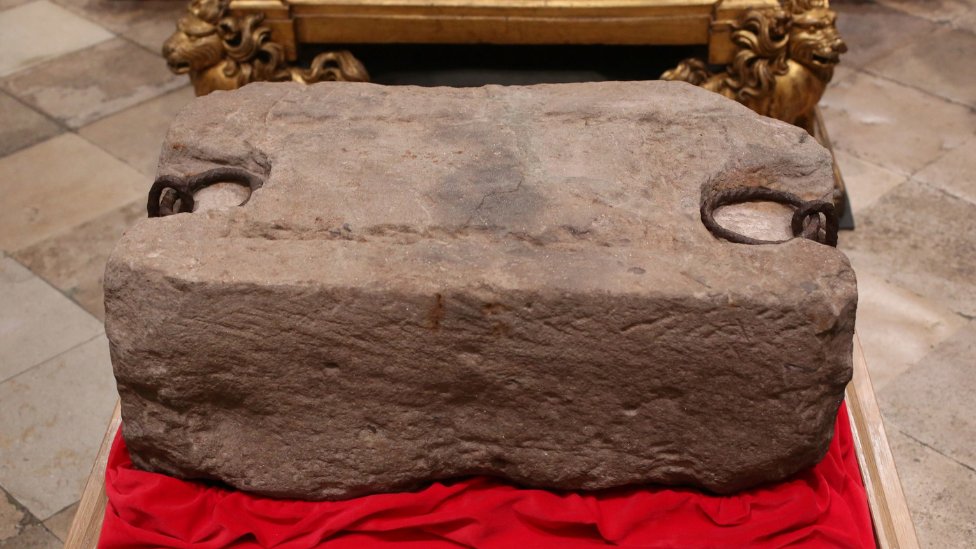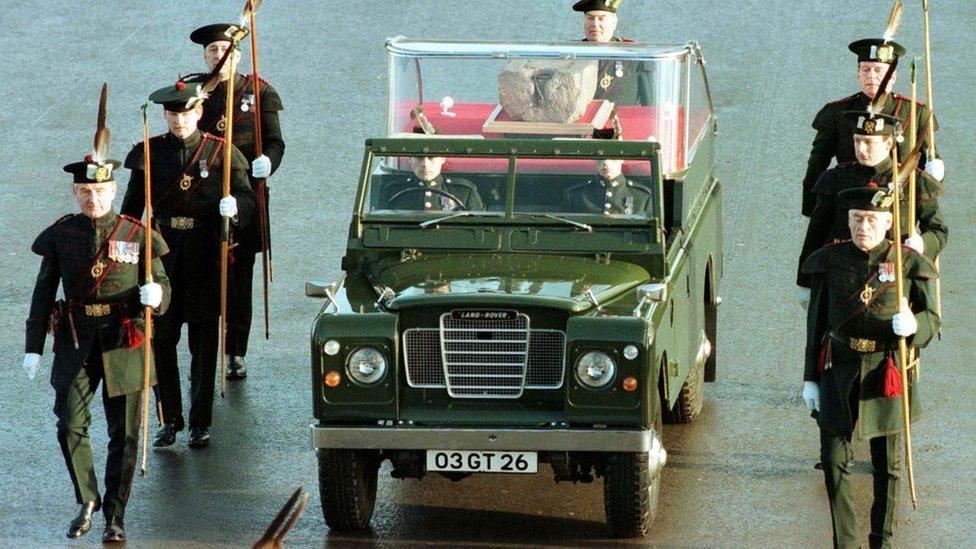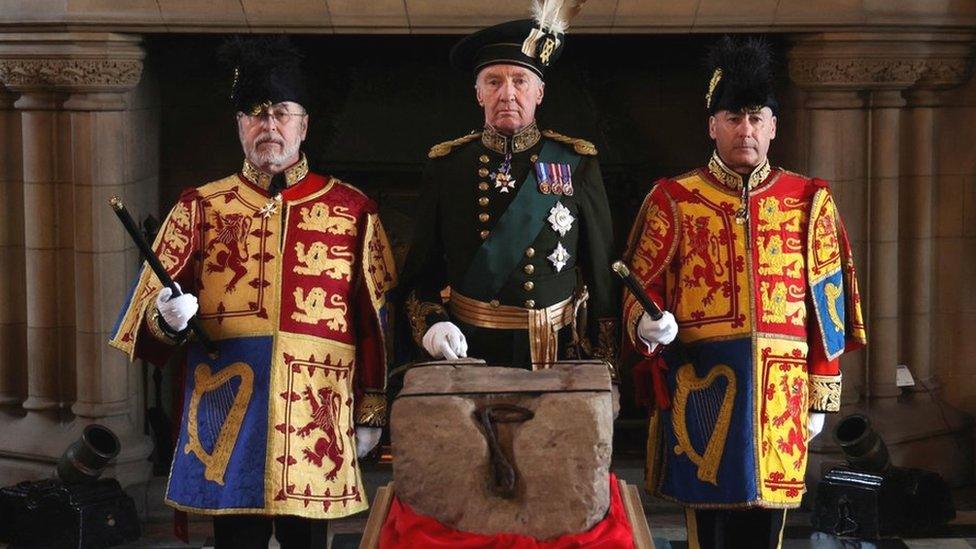Missing Stone of Destiny chip found in SNP cupboard
- Published

The Stone of Destiny will become the centrepiece of a new museum in Perth
A "missing" fragment of the Stone of Destiny gifted to Alex Salmond is being held in storage by the SNP.
Newly released Scottish government documents revealed the former first minister received the chip in 2008.
The chip was initially feared lost, but has since been uncovered in a cupboard at the SNP HQ.
Conservative politicians called for the chip to be donated to a new museum in Perth which will house the rest of the ancient symbolic stone.
The stone, also known as the Stone of Scone, was used as the coronation location for Scottish kings until it was seized and taken to Westminster Abbey by King Edward I of England in 1296 during the wars of independence.
Then in 1950, four students broke into Westminster Abbey on Christmas Day and stole the stone so they could "repatriate" it to Scotland.
The group were funded and backed by SNP co-founder John MacCormick.
According to Scottish Cabinet papers released on 1 January, it was Mr MacCormick's son, Prof Sir Neil MacCormick, who presented Alex Salmond with the fragment of the stone back in 2008.

The Stone was officially returned to Scotland in 1996, 46 years after it was taken from Westminster Abbey by a group of students
Mr Salmond, who was first minister from 2007 until 2014, said the fragment was handed to the SNP for safekeeping after he had "checked" with Historic Scotland that it was not wanted in the public collection.
However, the public body said it had "no records" of that check taking place.
SNP activist Stewart Duncan told The National newspaper that on a visit to the party's HQ he had seen, external the "small fragment of stone" in a "clear plastic box".
He added: "I was quite shocked that it was just tucked away in a cupboard. Incredible to see though."
The SNP said it was unable to verify whether the fragment had actually come from the historic artefact.
A spokesperson explained: ""The SNP has a small stone chip in storage. It is claimed to be a fragment of the Stone of Scone but, much like the stone in Edinburgh Castle, its provenance has not been established."
Mr Salmond told the Sunday Mail, external: "I was accused of having 'stolen' the fragment and its return was demanded to someone, somewhere.
"And then lo and behold it turned up in SNP HQ at the end of the week. No doubt this came as a red-faced surprise to the blue Tory gang."
The UK government's Scottish Secretary, Alister Jack, and his predecessor Michael Forsyth said Mr Salmond should not have accepted the gift in the first place, and called for it to be put on display alongside the rest of the stone.
Scottish Conservative MSP Murdo Fraser said it was one of Scotland's most important cultural artefacts and should not be kept in a cupboard in an SNP office.
What is the Stone of Destiny?
The Stone of Destiny is regarded as one of Scotland's most important cultural artefacts because it was used as the coronation seat for Scottish monarchs for more than 700 years before being stolen by England's Edward I in the late 13th century.
It remained south of the border for 654 years, during which time it was built into the base of a chair on which various English and British monarchs were crowned.
How Scotland's Stone of Destiny was snatched from Westminster Abbey
On Christmas Day 1950, a group of four Scottish students stole the stone from Westminster Abbey, with plans to repatriate it to Scotland.
It was found, covered with a saltire, on the high altar at the ruined Arbroath Abbey in 1951, months after it was taken from Westminster Abbey. From there, it was returned to London where it remained until 1996, when it was sent back to be put on display in Edinburgh Castle.
It has remained there ever since bar a brief sojourn back to Westminster Abbey for the coronation of King Charles III.
The stone will be moved from Edinburgh Castle to a new museum in Perth when it opens in the spring.
That is if the current stone is accepted as the original. Legend suggests monks at the monastery threw the original in the River Tay to prevent English soldiers getting their hands on it, while other stories allege copies were made in 1950 and the one set to be moved to Perth is fake.
- Published27 November 2021

- Published24 March 2023

- Published28 April 2023
